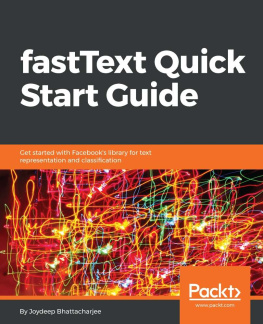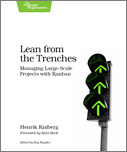Thomas Mailund - Efficient Text Representation and Search
Here you can read online Thomas Mailund - Efficient Text Representation and Search full text of the book (entire story) in english for free. Download pdf and epub, get meaning, cover and reviews about this ebook. publisher: Apress, genre: Home and family. Description of the work, (preface) as well as reviews are available. Best literature library LitArk.com created for fans of good reading and offers a wide selection of genres:
Romance novel
Science fiction
Adventure
Detective
Science
History
Home and family
Prose
Art
Politics
Computer
Non-fiction
Religion
Business
Children
Humor
Choose a favorite category and find really read worthwhile books. Enjoy immersion in the world of imagination, feel the emotions of the characters or learn something new for yourself, make an fascinating discovery.
- Book:Efficient Text Representation and Search
- Author:
- Publisher:Apress
- Genre:
- Rating:3 / 5
- Favourites:Add to favourites
- Your mark:
- 60
- 1
- 2
- 3
- 4
- 5
Efficient Text Representation and Search: summary, description and annotation
We offer to read an annotation, description, summary or preface (depends on what the author of the book "Efficient Text Representation and Search" wrote himself). If you haven't found the necessary information about the book — write in the comments, we will try to find it.
Efficient Text Representation and Search — read online for free the complete book (whole text) full work
Below is the text of the book, divided by pages. System saving the place of the last page read, allows you to conveniently read the book "Efficient Text Representation and Search" online for free, without having to search again every time where you left off. Put a bookmark, and you can go to the page where you finished reading at any time.
Font size:
Interval:
Bookmark:


Any source code or other supplementary material referenced by the author in this book is available to readers on GitHub via the books product page, located at www.apress.com/9781484259191 . For more detailed information, please visit http://www.apress.com/source-code .
is an associate professor in bioinformatics at Aarhus University, Denmark. He has a background in math and computer science. For the past decade, his main focus has been on genetics and evolutionary studies, particularly comparative genomics, speciation, and gene flow between emerging species. He has published R Data Science Quick Reference, The Joys of Hashing, Domain-Specific Languages in R, Beginning Data Science in R, Functional Programming in R, and Metaprogramming in R, all from Apress, as well as other books.

When hes not mentoring and helping his team at work, writing, or pursuing one of his many side projects, Jason enjoys spending time with his wife and four children and living in the Tulsa, Oklahoma region. More information about Jason can be found on his website: https://jason.whitehorn.us .
Algorithms operating on strings are fundamental to many computer programs, and in particular searching for one string in another is the core of many algorithms. An example is searching for a word in a text document, where we want to know everywhere it occurs. This search can be exact, meaning that we are looking for the positions where the word occurs verbatim, or approximative, where we allow for some spelling mistakes.
This book will teach you fundamental algorithms and data structures for exact and approximative search. The goal of the book is not to cover the theory behind the material in great detail. However, we will see theoretical considerations where relevant. The purpose of the book is to give you examples of how the algorithms can be implemented. For every algorithm and data structure in the book, I will present working C code and nowhere will I use pseudocode. When I argue for the correctness and running time of algorithms, I do so intentionally informal. I aim at giving you an idea about why the algorithms solve a specific problem in a given time, but I will not mathematically prove so.
You can copy all the algorithms and data structures in this book from the pages, but they are also available in a library on GitHub: https://github.com/mailund/stralg . You can download and link against the library or copy snippets of code into your own projects. On GitHub you can also find all the programs I have used for time measurement experiments so you can compare the algorithms performance on your own machine and in your own runtime environment.
Unless otherwise stated , we use x, y, and p to refer to strings and i, j, k, l, and h to denote indices. We use to denote the empty string. We use a, b, and c for single characters. As in C, we do not distinguish between strings and pointers to a sequence of characters. Since the book is about algorithms in C, the notation we use matches that which is used for strings, pointers, and arrays in C. Arrays and strings are indexed from zero, that is, A[0] is the first value in array A (and x[0] is the first character in string x). The ith character in a string is at index i 1.
When we refer to a substring, we define it using two indices, i and j, ij, and we write x[i, j] for the substring. The first index is included and the second is not, that is, x[i, j] = x[i]x[i + 1] x[ j 1]. If a string has length n, then the substring x[0, n] is the full string. If we have a character a and a string x, then ax denotes the string that has a as its first character and is then followed by the string x. We use ak to denote a sequence of as of length k. The string a3x has a as its first three characters and is then followed by x. A substring that starts at index 0,
Font size:
Interval:
Bookmark:
Similar books «Efficient Text Representation and Search»
Look at similar books to Efficient Text Representation and Search. We have selected literature similar in name and meaning in the hope of providing readers with more options to find new, interesting, not yet read works.
Discussion, reviews of the book Efficient Text Representation and Search and just readers' own opinions. Leave your comments, write what you think about the work, its meaning or the main characters. Specify what exactly you liked and what you didn't like, and why you think so.


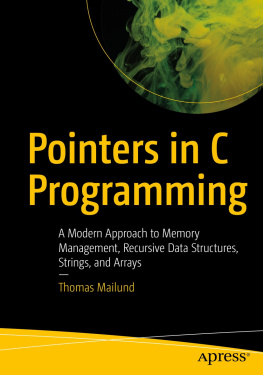
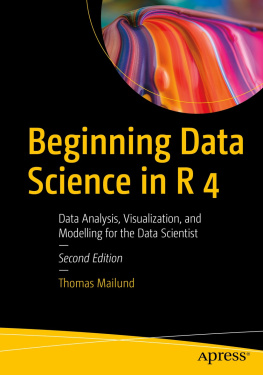
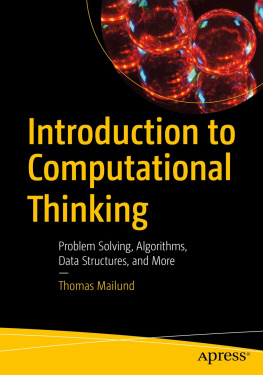
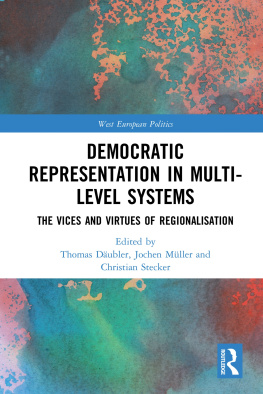

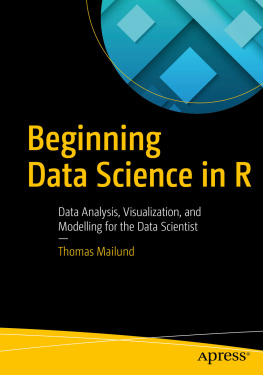
![Thomas Mailund [Thomas Mailund] - The Joys of Hashing: Hash Table Programming with C](/uploads/posts/book/124069/thumbs/thomas-mailund-thomas-mailund-the-joys-of.jpg)
![Thomas Mailund [Thomas Mailund] - Beginning Data Science in R: Data Analysis, Visualization, and Modelling for the Data Scientist](/uploads/posts/book/119629/thumbs/thomas-mailund-thomas-mailund-beginning-data.jpg)
